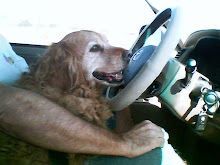I've waited a while to post this for reasons that will become obvious.
So what is Roadkill Chili? I'll try to make the long story short. The premier chili-growing areas in the US are in southern Arizona and New Mexico, with the area along the Rio Grande in New Mexico being the most famous. Most operations still dry their red chili outdoors in dry October and November air, and then ship the product before Christmas. By leaving the fruit on the plant later and drying it slowly, desirable complex flavors develop. This is what gives this area an advantage over peppers that are just hot.
Shipping is where we enter the story. Most of the growing areas are rural, and the product must be transported on smaller roads and 2-lane highways to central collection points for further processing. For years I have seen the tell-tale red spots by the side of the road during the shipping season. These feather light dried husks of deliciousness float out of the tops of open wooden crates on these back roads. These free-range chili lay in the stubble by the side of the road, about 5 feet beyond the end of the shoulder, glistening like rubies awaiting discovery. (Aerodynamics of chili pod travel: they weight almost nothing and are shaped like arrows when dry. Trucks are going about 65 MPH on that stretch of the road, which also has a slight curve, so the pods fly out as small projectiles. They either glide to a point where they fall gently to the ground or smash into the ground and shatter at higher speeds.)
This past December, with all my free time after retirement, I decided to stop and glean this roadkill chili. I determined that it had been less than a week since they chili shipped and it had not rained since that time. The chili should still be in peak condition!
I used a scientific method for gleaning, of course. With my trusty plastic grocery bag, I went approximately 1/10 mile in each direction from my car, first on one side of the road and returning on the other side. I did not pick up pods that had been shattered, crushed or that looked like they had been munched by critters. I was able to fill the bag with about 2 pounds of splendid red chili for enchilada sauce extraordinaire.
So here's the part that made me wait to post until now. This chili was essentially beautiful and perfect, so I did it again, filling another bag for about 4 lbs of pods. It runs about $5 a pound in the grocery, if you can get it. I was planning to send Christmas boxes in the next few days anyway, so what the heck, several of my special friends got premier roadkill chili and I kept enough to make a big batch for me. I did not mention the 'Roadkill' part to them. Heck, dried pods need enough cleaning and cooking before use that the roadside dust wouldn't make a difference anyway, right?
So next December if you see little red spots by the roadside in southern NM and AZ, think about whether you want to try Roadkill chili, too. Let me know if you'd like me to post the recipe for killer red chili sauce from pods! It isn't hard to make but takes time and there are a few tricks to the trade, passed down through the generations.























